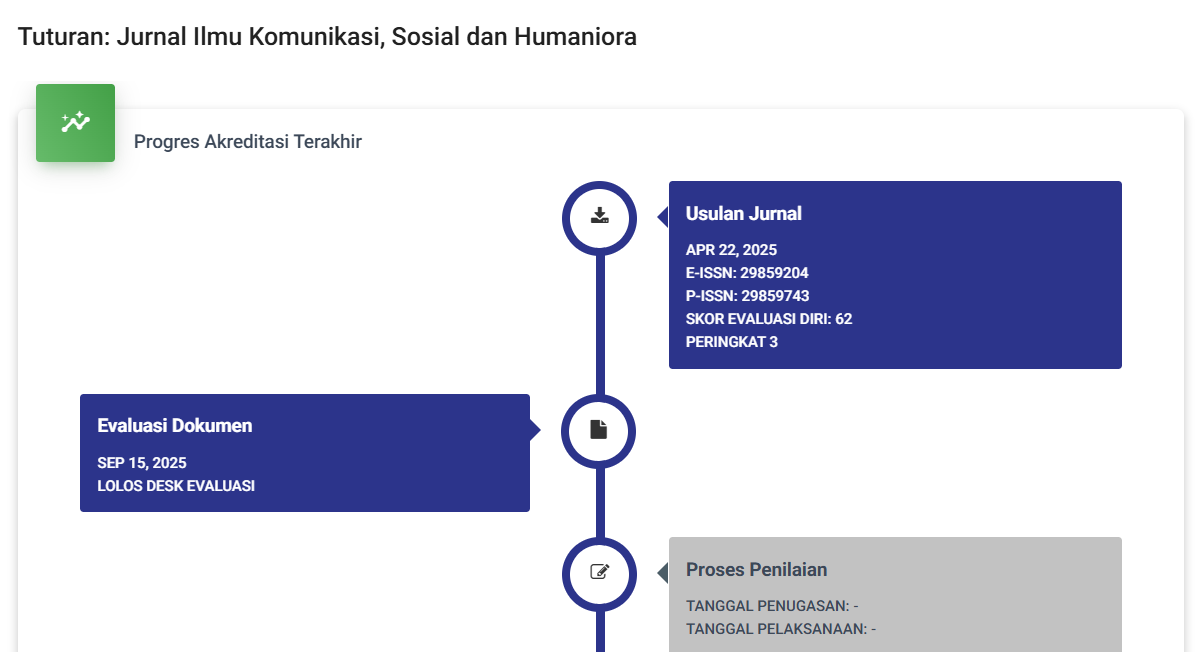Penggunaan Film Pendek Sebagai Bentuk Branding PT Sarinah
DOI:
https://doi.org/10.47861/tuturan.v1i3.412Keywords:
Branding, Short Films, Meaning, Audience Reading, Dominant Hegemonic Reading, Negotiated Reading, Oppositional Hegemonic ReadingAbstract
This research was conducted to find out the message producer meaning towards PT Sarinah's branding in the short film "Mbok dan Bung", the audience reception towards PT Sarinah's branding in the short film "Mbok dan Bung", and the audiences reading position towards the use of the short film "Mbok dan Bung" as PT Sarinah's branding which positioned using the Stuart Hall encoding/decoding model. The method used is qualitative reception analysis with observation and interview data collection techniques. The results of the study show that the message producer meaning of PT Sarinah's branding in the short film "Mbok dan Bung" is divided into four branding scenes that contain the humanity values, gender equality values, historical values, and innovation values implemented by PT Sarinah. The audience's reception for the branding of the four scenes received various interpretations from the audience, but in the end the audience, who are movie observers, stated the branding that PT Sarinah wanted to create in the short film "Mbok dan Bung" had been successful. The audience reading position of the four branding scenes has various audience reading positions, in the first scene there are Dominant Hegemonic audience reading positions as the majority and Oppositional Hegemonic Reading, in the second scene there are Dominant Hegemonic audience reading positions as the majority and Oppositional Hegemonic Reading, in the third scene there are audience reading positions that are balanced on Dominant Hegemonic and Oppositional Hegemonic Reading, in the fourth scene there are Dominant Hegemonic audience reading positions as the majority, Negotiated Reading, and Oppositional Hegemonic Reading.
References
Alfathoni, M. A., & Manesha, D. (2020). Pengantar Teori Film. Deepublish.
Delya, A. N., Sakuri, A. A., & Sugiharto, C. E. (2022). Analisis Resepsi Khalayak terhadap Makna Muallaf Pada Iklan Abstract. Jurnal CommLine, 43-56.
Ghassani, A., & Nugroho, C. (2019, May). PEMAKNAAN RASISME DALAM FILM (ANALISIS RESEPSI FILM GET OUT). Jurnal Manajemen Maranatha, 18(2), 127-134.
Hamdani, A. (2016). Strategi Komunikasi Pemerintah Kabupaten Kutai Kartanegara Melalui Film Erau Kota Raja Dalam Promosi Pariwisata. eJournal Ilmu Komunikasi, 320-332.
Ibrahim, I. S. (2011). Budaya Populer sebagai Komunikasi; Dinamika Popscape dan Mediascape di Indonesia Kontemporer. Jalasutra.
Javadalasta. (2011). Lima Hari Mahir Bikin Film. Mumtaz Media.
Prasetyo, B. D., & Febriani, N. S. (2020). Strategi Branding: Teori dan Perspektif Komunikasi dalam Bisnis. Universitas Brawijaya Press.
Sitorus, Sunday Ade, et al. (2022) Brand Marketing: The Art Of Branding. Media Sains Indonesia.
Suhandang, K. (2010). Periklanan: Manajemen, Kiat dan Strategi. NUANSA.
Yasa, G. P. (2021). ANALISIS UNSUR NARATIF SEBAGAI PEMBENTUK FILM ANIMASI BUL. SASAK: DESAIN VISUAL DAN KOMUNIKASI, 48-57.








